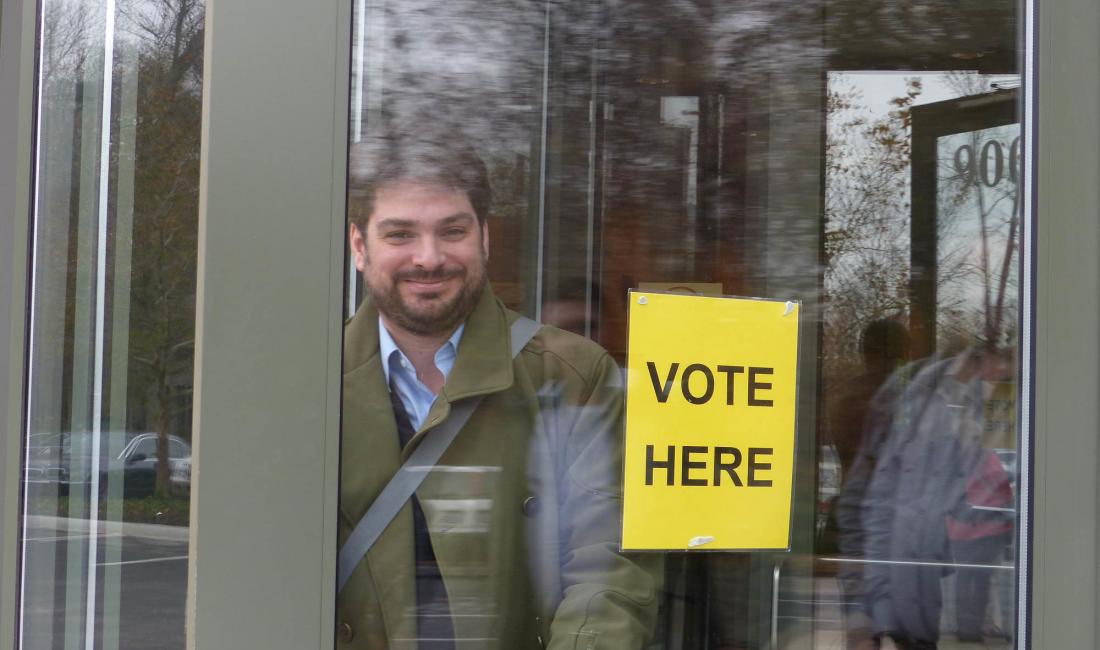There has been no shortage of criticisms of direct democracy in general citizen-referendums in particular. For example, the philosopher A.C. Greyling proclaimed that ‘Referendums should not be taking place in a representative democracy’ because the voters were ill-informed, and the result would therefore undermine their actual interests (1). For a pure philosopher, it is, perhaps, acceptable to argue without reference to facts, but as a political scientist it is not. Before we denounce referendums – or any other institutions, for that matter – we need facts, hence, the question remains, if provisions for citizen-initiated referendums – on-demand direct democracy – has positive benefits in countries or polities where these provisions are used sparingly?
Surprisingly, this is an issue that has not previously been analysed. Given the paucity of citizens initiatives in states other than Switzerland and half of the US states, it makes little statistical sense to correlate the annual (or total) number of citizen-initiated referendums with distinct policy outcomes. The number of cases is simply too small to draw statistically significant inferences.
However, the point is not, in a sense how many referendums there have been, but the effect that provisions for these have. Researchers talk about the ‘gun behind the door’ effect of direct democracy, namely, that the provisions were there as a deterrence, as a means to keeping politicians on their toes; that is “the ballot initiative process is that it makes government more responsive to public demands than would be the case under a purely representative system”. (2)
So, what does the evidence show? In recent years there has been a trend towards so-called institutionalism in political science. Scholars have shown that institutions such as federalism can have direct and positive effects on public policy outcome such as economic growth. (3)
For, example, in a much-cited article, Kenneth Schulz and Barry Weingast, found,
A state's ability to raise money through public borrowing is enhanced when debtholders have mechanisms for sanctioning state leaders in the event of default. Institutions associated with liberal government provide such mechanisms. All other things being equal, states that possess these institutions enjoy superior access to credit and lower interest rates than do states in which the sovereign has more discretion to default unilaterally. Liberal states can not only raise more money from a given economic base but can also pursue tax-smoothing policies that minimize economic distortions. (4)
Elaborating on this point, other research has shown that,
Strong,” two-party “Westminster” systems, based on single-member district electoral rules, and single-party, bare majority cabinets do not perform as well as “weak,” multiparty coalition governments with proportional representation as an electoral rule...[Thus there is] strong evidence that governments with consensual, inclusive, and accommodative constitutional structures and wider popular cabinet support behave more “responsibly” than do their more majoritarian, exclusionary, and adversarial counterparts. (5)
Could something similar be found regarding the effect of citizen-initiated referendum? Are provisions for these likely to result in better policy outcomes? And, if so, how does the work-product of direct democracy compare with the effect of other political institutions, such as federalism, presidentialism, second chambers and electoral systems?
To analyse this, we gathered data from the World Bank on ‘life-expectancy’, CO-2 Emissions and the levels of taxation and contrasted these data with the presence of provisions for direct democracy, which was measured as a dummy variable (1= provisions for citizen-initiated referendums, 0= no provisions for citizen-initiated referendums) (6). The analysis was limited to years after 2014 and covered all members of the United Nations as well as Taiwan.
Needless to say, a statistical analysis of the effect of institutions is not the be-all-and-end-off of all analysis. Factors other than political institutions may play a role, but as a first preliminary, an analysis of the effect of institutions can, at the very least, reveal if there is a statistical effect at all. The answer, as the next section will show, are surprisingly positive.
Direct Democracy and Life-Expectancy
Let us first look at the effect of citizen-initiated referendums (and other institutions) on life expectancy? Basically, do political institutions make us live longer?
As the figure shows, some political institutions have different effects on life expectancy, and others do not. To start with the latter, it doesn’t matter if you have senates or federalism – neither of the two variables are statistically significant.
|
|
Variables |
|
B-Coefficients |
|
|
|
|
Citizen initiated referendums |
|
9.242*** |
|
|
|
|
|
|
(2.644) . |
|
|
|
|
Second Chambers |
|
-.050 |
|
|
|
|
|
|
(1.440) |
|
|
|
|
Proportional Representation |
|
3.991 |
|
|
|
|
|
|
(1.357)** |
|
|
|
|
Presidentialism |
|
-9.474*** |
|
|
|
|
|
|
(1.291) |
|
|
|
|
Federalism |
|
1.028 |
|
|
|
|
|
|
(3.866) |
|
|
|
|
Constant) |
|
83.209*** |
|
|
|
|
|
|
(2.486) |
|
|
|
|
Dependent Variable: Life Expectancy, R-Squared: .32, N: 195, *** p<.01, ** p<.05
|
|
|||
Having a presidential system, on the other hand, is literally harmful to your prospects of a long life. Having a presidential system statistically reduces your life-expectancy by nine years! Of course, this is partly a reflection of the fact that presidential systems are more prevalent in developing countries. Still, it is not great advertisement for this system!
Conversely, countries that have more proportional systems are likely to have longer life-expectancy. Statistically speaking, moving from a first-past-the-post system to a mixed member-system (as New Zealand did in the 1990s) will increase life by nearly four years, and eight years if you move to a fully proportional system. This is very positive, but – and this is the interesting part – the effect of having constitutional provisions for citizen-initiated referendums will increase life expectancy for almost a decade (9.2 years to be exact). Of course, the finer points of the chain of causality still have to be analysed, but from a purely statistical point of view, direct democracy is good for life.
The Environment and Direct Democracy
One of the most pressing issues at the time of writing is climate change and what some call the climate emergency. Traditionally, many were sceptical of the relationship between environmental protection and direct democracy. The logic of NIMBYism (from Not-in-by-back-yard) has been used as an argument against letting the people decide on environmental issues (7). However, there have been virtually no studies of how (or if) provisions for citizen-initiated referendums correlate with higher (or lower) CO-2 emissions.
Based on world bank data, we constructed an index, with the value 100 for the cleanest country (8). Thus, the higher the value of the index the less clean. The dependent variable was correlated with institutional variables using a simple regression model. Once again, the results indicate that formal institutions matter. Senates and Federalism are statistically insignificant, presidential systems are detrimental to CO-2 emissions; having a presidential system increases emissions by units.
|
|
Variables |
|
B-Coefficients |
|
|
|
|
Citizen initiated referendums |
|
7.460*** |
|
|
|
|
|
|
(2.695) |
|
|
|
|
Second Chambers |
|
.151 |
|
|
|
|
|
|
(1.46) |
|
|
|
|
Proportional Representation |
|
4.832*** |
|
|
|
|
|
|
(1.383) |
|
|
|
|
Presidentialism |
|
-8.861 |
|
|
|
|
|
|
(1.316) |
|
|
|
|
Federalism |
|
4.165 |
|
|
|
|
|
|
(3.940) |
|
|
|
|
Constant) |
|
66.811*** |
|
|
|
|
|
|
(2.534) |
|
|
|
|
Dependent Variable: CO2, R-Square: .311, N: 195 |
|
|||
But, once again, having a proportional electoral system and having provisions for citizen-initiated referendums lead to improvements. These institutions are both statistically correlated with higher scores on the clean-environment index. But, like in the case of life-expectancy, the effect of direct democracy provisions is greater than having a PR-electoral system. Thus, the latter improve the index by four units, the former by over seven units.
So, environmentalists should like direct democracy. This might explain why Warwick District Council decided to hold a referendum on whether to increase taxes to fund projects to combat climate change.
But, of course, not all voters like tax increases. Is it generally the case that provisions for citizen-initiated referendums lead to higher taxes?
Tax and Direct Democracy
Using World Bank Data on the Marginal rate of income tax, we can calculate the effect of different institutions. However, unlike life expectancy and CO-2 emissions, the effects of institutions are smaller. There is no statistically significant effect of electoral systems, second chambers, presidentialism, or federalism. Only one institution has a statistically significant impact on the level of taxation, namely provisions for citizen-initiated referendums.
|
Variables |
|
B-Coefficients |
|
||
|
|
Citizen initiated referendums |
|
-5.115** |
|
|
|
|
|
|
(2.604) |
|
|
|
|
Second Chambers |
|
1.849 |
|
|
|
|
|
|
(1.511) |
|
|
|
|
Proportional Representation |
|
1.865 |
|
|
|
|
|
|
(1.436) . |
|
|
|
|
Presidentialism |
|
-.603 |
|
|
|
|
|
|
(1.322) |
|
|
|
|
Federalism |
|
2.412 |
|
|
|
|
|
|
(3.605) |
|
|
|
|
Constant |
|
29.144*** |
|
|
|
|
|
|
(2.759) |
|
|
|
|
Dependent Variable: Marginal Tax-rate, R-Squared: .062, N: 195, *** p<.01, ** p<.05
|
|
|||
[1] https://www.varsity.co.uk/news/17361, Accessed 28th February, 2020
[2] Lascher Jr, E. L., Hagen, M. G., & Rochlin, S. A. (1996). Gun behind the door? Ballot initiatives, state policies and public opinion. The Journal of Politics, 58(3), 760-775.
[3] For example, S.H. Haber, D.C. North, and B.R. Weingast (2008). Political institutions and financial development. Stanford University Press.
[4] K.A Schultz and B.R. Weingast (2003). The democratic advantage: institutional foundations of financial power in international competition. International Organization, 57(1), 3-42, p. 3
[5] M.M. Crepaz (1996). Consensus versus majoritarian democracy: political institutions and their impact on macroeconomic performance and industrial disputes. Comparative political studies, 29(1), 4-26, p. 4. See also, Arend Lijphart (2012). Patterns of democracy: Government forms and performance in thirty-six countries. New Haven: Yale University Press.
[6] Federalism and Presidentialism were based on dummy variables. In each case, 1 if the institution was present. Senates and Electoral systems were scaled 0 in cases of unicameral parliaments, 1 for indirectly elected second chambers and 2 for directly elected upper houses. Electoral systems were coded as follows, 0 for majoritarian electoral systems, 1 for mixed-member systems (as in Germany and New Zealand) and 2 for fully proportional electoral systems (as in Norway). I am grateful for exemplary and expert research assistance from Mr Mason Waters, who gathered the data for this section.
[7] T. Dvořák (2018) ‘The use of local direct democracy in the Czech Republic: how NIMBY disputes drive protest behaviour’. Local Government Studies, 44(3), 329-349.




